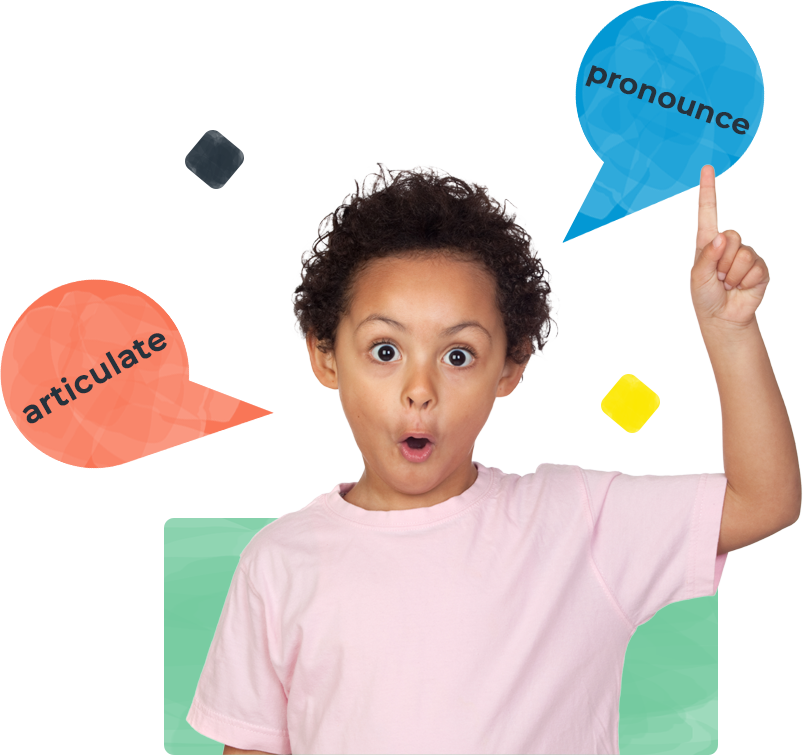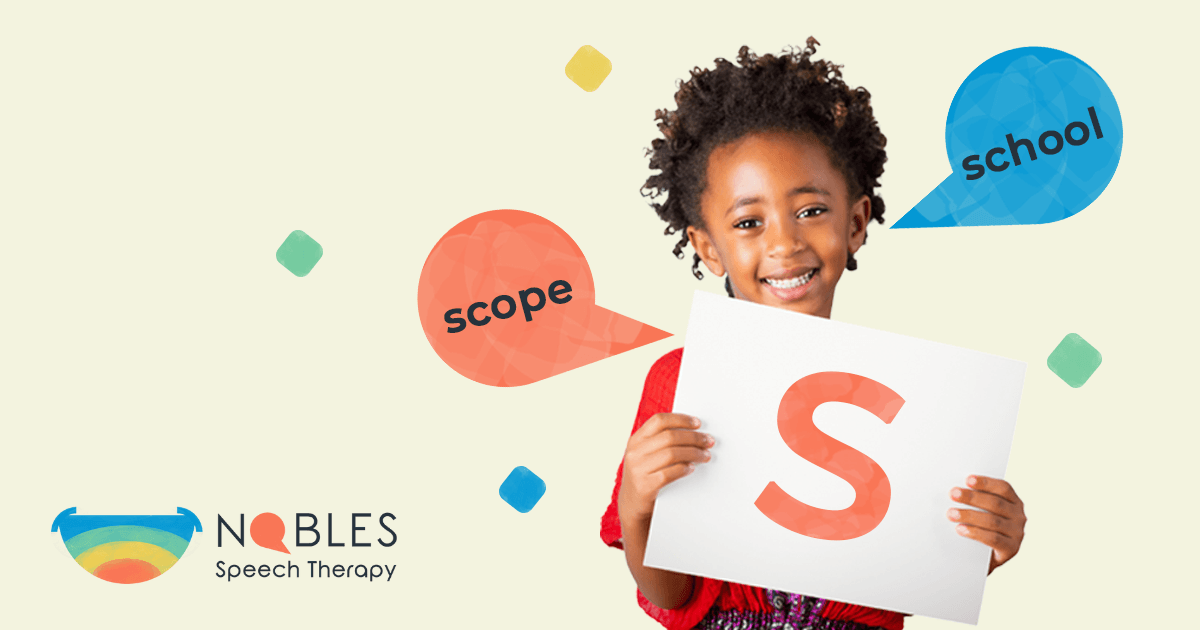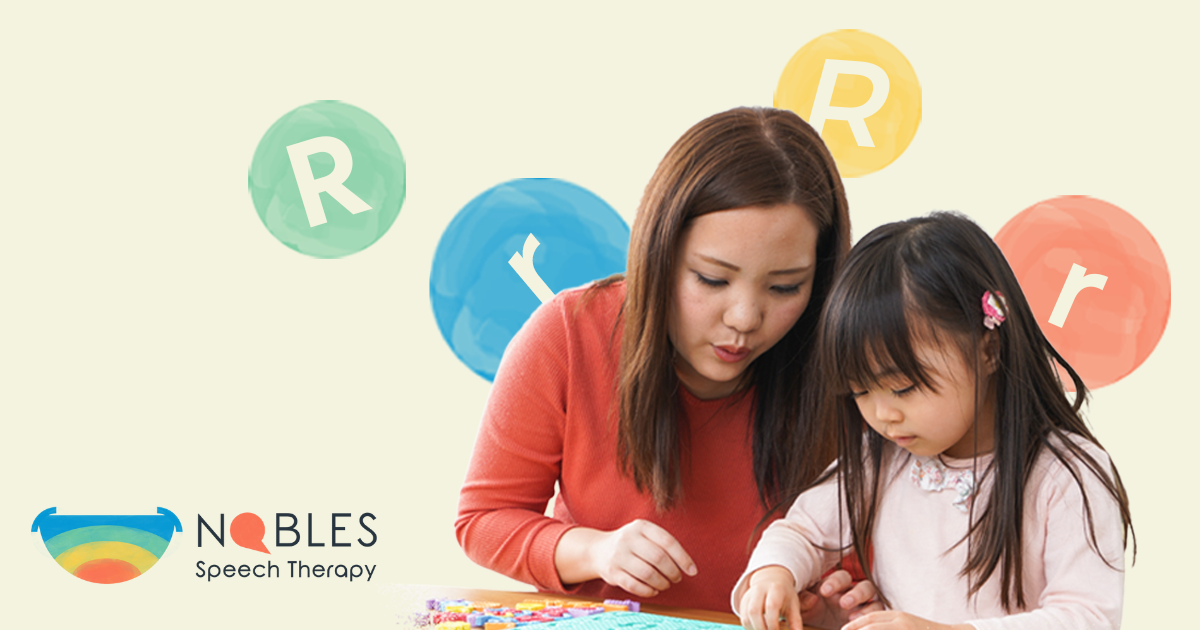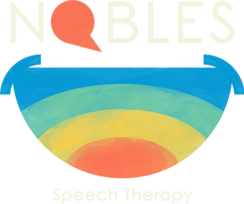As your child learns to speak, it is an exciting yet sometimes frustrating experience. Although you are proud of their achievements, their initial pronunciation makes it difficult to understand what they say. This is because speech takes coordination between the brain, where thoughts are formed, and the tongue and mouth, where the sounds are produced.
The good news is speech development is progressive, with your child becoming better and better at expressing themselves and developing their words each day. At 18 months, parents typically understand 25% of their child’s words. By two years, this jumps rapidly to 50-75%; by age three, you should understand them 100% of the time.
Tips for Supporting Your Child’s Speech Development
To help your child improve their pronunciation and articulation, here are five tips to help them master their sounds and learn new words more easily.
Tip #1. Understand Age Related Common Sound Errors
Understanding
common pronunciation errors at each stage of speech development is helpful. This alleviates expectations you might inadvertently place on your child, allowing them to develop their pronunciation and articulation skills at the expected pace. Use these milestones as your guide:

Before the Age of 3:
These are the most challenging years to understand your child, mainly because they tend to:
- Delete the final consonants so cat sounds more like ca
- Delete unstressed syllables such as banana becoming nana
- Choose the wrong consonants, such as saying tat instead of cat
- Creating a simplified version of words, such as dada for daddy or baba for bottle

Ages 1 to 3:
As your child’s speech develops between the ages of 1 to 3, you can help them pronounce their “easy 8” sounds, which include:
- M as in moo
- B as in ba
- Y, as in you
- N, as in no
- W as in wa
- D as in da
- P as in pa
- H as in ha

Ages 3 to 6
At this age, your child should begin pronouncing their “middle 8” sounds which include:
- T as in ta
- Ng, as in sing
- K as in ca
- G as in ga
- F as in fa
- V as in va
- Ch as in cha
- J as in ja
- S as in sa

Ages 5 to 7
As your child becomes an engaging conversationalist, they will include the following “late sounds”:
- Sh as in sha
- Th as in tha
- R as in ra
- Z as in za
- L as in la
- Zh as in measure
Tip #2. Use Visual Models
Your mouth is the perfect visual model to help your child see how certain sounds are made. One of the easiest speech articulation exercises is to sit facing your child, so they can see your mouth as you pronounce words. Then, have them mimic the words or say them along with you. You can also use visual cues, such as holding up objects, pointing to items in the room, or viewing images to help them learn new words. Be sure to keep it age appropriate to avoid frustration.
Tip #3. Speak Slower
Children often mispronounce words because they are struggling to understand their parent’s fast-paced talking. Speaking slower has two benefits. First, it helps your child slow down their words so they can speak more clearly. Second, it helps them understand how to say words correctly. Be careful you don’t talk too slowly. Instead, maintain a conversational tone. The trick is to help your child differentiate each word so they can hear how to say them correctly.
Tip #4. Correct Them Gently and Acknowledge Correct Pronunciation
Although it is tempting to repeat mispronounced words to your child and have them say them back to you, this is less effective than you might think. Instead, using a more conversational approach works best. Repeat the word in a question to help your child with articulation problems. For example, if they say, “Look at the tat.” Ask them, “You want me to look at the cat?” This stresses the mispronounced word while asking a question to carry on the conversation.
You can also clarify what they said by offering a choice: “Did you see a tat, or a cat?” This then forces them to respond by saying the word correctly to answer your question. Likewise, if your child learns a new word, you should confirm you understood what they said. For example, you might say, “Oh yes, you want me to look at the cat? Good job.” This helps build their confidence, so they feel comfortable using new words.
Tip #5. Always Engage in Conversation and Clarify
If your child is particularly chatty, it can be difficult constantly deciphering what they are saying, especially when you are tired or multitasking. Although it might be tempting to nod or say something neutral to acknowledge that your child is speaking, this sends the wrong message. First, they might be puzzled by your response, especially if they asked a specific question. Next, you miss out on teaching opportunities. Your child’s speech development calls for constant engagement to help them learn how to speak and carry on intelligent conversations. If you don’t respond intelligently because you don’t understand them, they are unaware they are making mistakes.
If you don’t understand something, always respond by asking your child to repeat what they said, or use one of the tactics in tip # 4. You can also ask them to show you what they want, so you can help them learn how to say those words. These contextual cues are beneficial to both you and your child. You can also consider their facial expression and intonation to determine their feelings. For example, do they feel what they are saying is urgent, or perhaps they are trying to say something funny?
Empower Your Parenting With Knowledge of Speech Development:
Although the development of standard articulation takes time, how you speak and respond to your child impacts their ability to learn. If you understand expected milestones for speech development, you can help alleviate the stress and pressure on you as a parent while also identifying when a potential articulation disorder exists.
To dive deeper into our approach to speech therapy and find out more about how we can support your child's journey, visit:

About the Author
Myles Nobles is a pediatric speech and language pathologist in Laurel, MD. He uses a gentle approach and customizes treatment plans to help children from diverse backgrounds enhance their speech and language skills and reach their full potential, despite challenges such as autism. Myles' goal is to improve children's independence, self-confidence, and social well-being.
You May Also Be Interested
Contact
Nobles Speech Therapy LLC
info@noblesspeechtherapy.com






